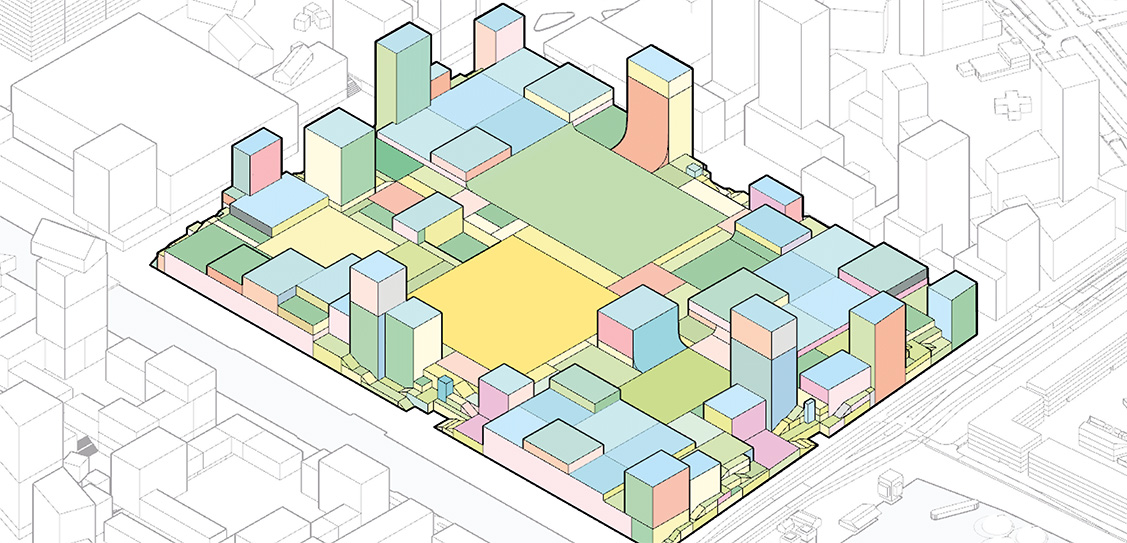MVRDV, alongside Utrecht’s exhibition, event, and conference centre Jaarbeurs, have released the design for a new, green-roof-topped Jaarbeurs venue, along with a master plan for the surrounding neighbourhood. With a focus on sustainability and quality of life, the new venue represents a major change for an area currently dominated by logistics, cars, and parking spaces. MVRDV founding partner Winy Maas describes the goal as “a garden in the city”, with Jaarbeurs CEO Albert Arp calling the proposal a “city oasis”.
Jaarbeurs came to MVRDV with a challenge, to design a green, sustainable, and innovative venue while also giving the surrounding neighbourhood an important boost. After a two year process, the two companies have launched their plan for a 120,000m2 venue on the existing Jaarbeurs site to the west of Utrecht’s central station, forming the beating heart of a larger 600,000m2 master plan to transform the under-utilised area at the station’s rear.
The new Jaarbeurs will be a sustainable building that opens in all directions, with an accessible green roof that will descend to ground level via cascading terraces. The proposed rooftop park will be a garden in the city, transforming the under-utilised area at the rear of the station and on this roof it is hoped that a carpet of programmable 'squares' and gardens will offer space for urban nature, events, recreation, water storage, and energy generation. The rooftop of the new Jaarbeurs thus becomes an oasis in the city.
Alongside its event halls, the masterplan also shows the ground floor of Jaarbeurs hosting functions such as hospitality, shops, and offices. . A car-free street, the “Jaarbeurs Boulevard” cuts through the site, serving as the neighbourhood’s backbone. This boulevard will not only provide access to the Jaarbeurs venue, but also form a key route connecting the station to the areas beyond, including the Merwede Canal, which will be transformed into a vibrant waterfront area with restaurants and terraces. The plan will connect the centre, the station area, the Merwede Canal zone, and the Kanaleneiland. Here, residents of Utrecht, visitors to the Jaarbeurs, and tourists visiting the city will be able to enjoy a drink in the sun. Complementing this focus on quality of life is the project’s sustainability strategy, with the design pursuing BREEAM-Excellent certification.
It is rare that a private party not only invests in its own building, but also includes the environment in its plans. This master plan shows that Jaarbeurs is passionate about the city and dares to think outside the box. This is desperately needed, because this underutilized area has the potential to become a fantastic neighbourhood with the venue as its core is an attractive green ‘hill’ in the city. The plan is also an opportunity to significantly improve the city and properly connect the centre, the station area, the Merwede Canal zone, and the Kanaleneiland.
W. Maas, MVRDV founding partner.
The announcement of the plans instigates the development of the next phase of Jaarbeurs. Working with the municipality of Utrecht, the plan will be elaborated, with the inclusion of a participatory process consulting local residents, sports clubs, entrepreneurs, and other stakeholders in the neighbourhood.
The masterplan for the Jaarbeurs district is developed in cooperation with SITE Urban Development and the construction of the Jaarbeurs exhibition, event, and conference centre is expected to start in 2023.



